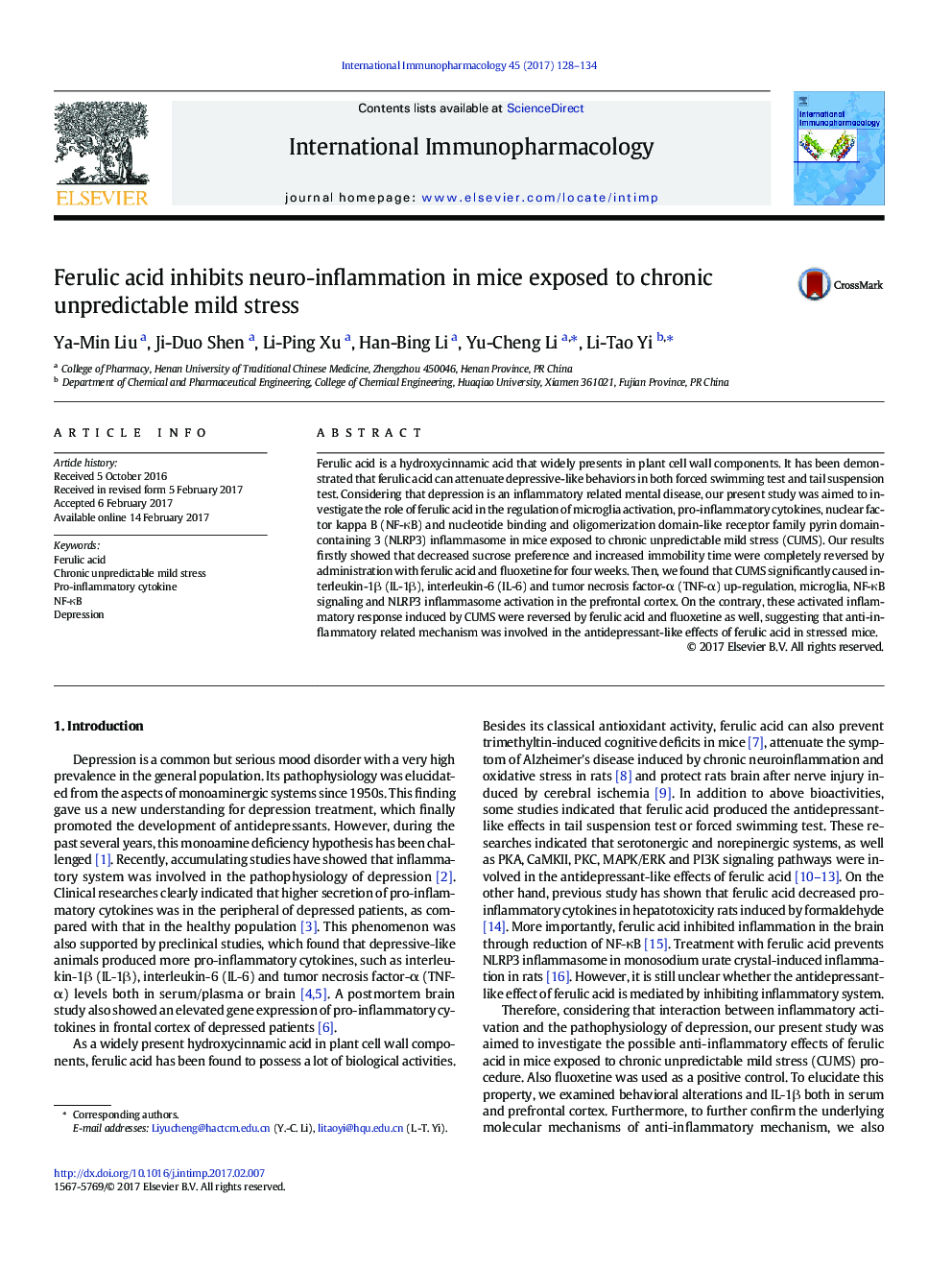| Article ID | Journal | Published Year | Pages | File Type |
|---|---|---|---|---|
| 5555603 | International Immunopharmacology | 2017 | 7 Pages |
â¢Ferulic acid reverses depressive-like behaviors in CUMS.â¢Ferulic acid decreases pro-inflammatory cytokines in prefrontal cortex.â¢Ferulic acid suppresses microglia activation and NF-κB signaling.â¢Anti-inflammation was involved in the antidepressant effect of ferulic acid.
Ferulic acid is a hydroxycinnamic acid that widely presents in plant cell wall components. It has been demonstrated that ferulic acid can attenuate depressive-like behaviors in both forced swimming test and tail suspension test. Considering that depression is an inflammatory related mental disease, our present study was aimed to investigate the role of ferulic acid in the regulation of microglia activation, pro-inflammatory cytokines, nuclear factor kappa B (NF-κB) and nucleotide binding and oligomerization domain-like receptor family pyrin domain-containing 3 (NLRP3) inflammasome in mice exposed to chronic unpredictable mild stress (CUMS). Our results firstly showed that decreased sucrose preference and increased immobility time were completely reversed by administration with ferulic acid and fluoxetine for four weeks. Then, we found that CUMS significantly caused interleukin-1β (IL-1β), interleukin-6 (IL-6) and tumor necrosis factor-α (TNF-α) up-regulation, microglia, NF-κB signaling and NLRP3 inflammasome activation in the prefrontal cortex. On the contrary, these activated inflammatory response induced by CUMS were reversed by ferulic acid and fluoxetine as well, suggesting that anti-inflammatory related mechanism was involved in the antidepressant-like effects of ferulic acid in stressed mice.
